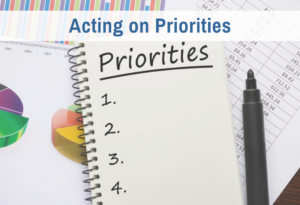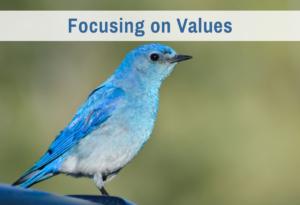Last week I wrote about the problem with setting twofers as goals. Drafting that article took longer than I planned, as I mentioned. What I didn’t say was that it took 5x as long as I planned! 14 hours! That was ridiculous in some ways, and okay in others, because it enabled me to make a significant advance in integrating my systems.
A quick restatement of the background from the previous article
As I mentioned in that article, I have a goal I’ve titled “Life in Order.” My statement of the goal is:
Health fostering activities, social activities, business fostering activities, recreation, and writing smoothly integrate into days, weeks, and months of happy productiveness.
My deepest motivation for this project is: systematization. My goal is to systematize the work I’ve already done in each of these areas. I’ve already identified how to balance them at a high level; I’ve already figured out what is most important to me in each area; I’ve already created sleep and exercise routines, business systems, writing processes, and boundaries to protect work and social time. To systematize my life means to get these different aspects to fit together seamlessly. I still need to tweak specific systems from time to time, but mostly I need to monitor how they are meshing, nudge parts into alignment, and automatize what works well.
To understand how I upgraded my systems, you need to know what systems I had in place, and why those systems broke.
The systems in place prior to the article
I hadn’t taken so long to write an article in years, because quite a while ago I stopped spending more than about 4 hours on an article. If I thought an article was too complicated, I didn’t start it. If I got three hours in and didn’t see the end in sight, I simply dropped it and didn’t send out an article that week. The principle I was operating on was: sending out articles was less important than keeping up with my other work. Therefore, if something had to give, I didn’t send an article. Over time, I got better at writing articles quickly. Last year I sent out 30 articles, each of which went from idea to draft in roughly 2–4 hours.
So, what changed? I have a new initiative regarding marketing the business. As part of the marketing strategy, I need to draft articles according to a plan. I need to write an article every two weeks, and I need to tie the topic into an appropriate theme for the marketing push for that two weeks. This is my absolute top priority for growing the business right now.
When I made this commitment, I had predicted that I would have trouble writing to a theme, because I have in the past. My coach suggested that I could write on any topic I was inspired by and worry about tying it to the theme later. That sounded like a good plan that would make this doable.
Early on I discovered I couldn’t just write on a topic I know. I needed to have something new to say, or else I couldn’t sustain the creative thinking to compose a decent article. This was a permanent change to my topic-selection process, and I put a post-it next to my desk.
I went into the article expecting to be able to write it in 3-ish hours.
The change in priorities needed
About two hours in on writing that article, it looked like it would take twice as long as expected (6-ish hours). I concluded I needed to commit to finishing the article even if it was harder than I thought. I needed to make this change to how I balanced work because I had changed my priorities. Getting an article done on schedule was now a top priority, which it hadn’t been before. I was on a schedule and I needed to get that article finished.
This meant I needed a new strategy for integrating work projects. I needed to build flexibility into my schedule, so that if the biweekly article writing took longer than expected, I knew where to find the extra time to finish it without sacrificing other commitments or sleep. As a result of this, I overhauled my commitment process for work, relationships, and recreation. I came up with a new set of guidelines and implemented them immediately. During the first few days using them, this created a significant change in my daily life that reduced pressure tremendously and permitted a lot of productive work on this article. I am quite excited about these new guidelines. I think they will resolve several longstanding conflicts.
For sure they helped me concentrate on the article. As I worked on the article, I made several new discoveries that will help many Thinking Labbers and Launchers this spring. In fact, I had so much new material that at one point I was inspired to divide it into two parts and use it to draft two articles, one after another. I thought I could finish both reasonably soon and be ahead on articles! (Does anyone see something ironic here? I was writing an article on the problem with twofers and yet I assigned myself a clearcut twofer. I caught that mistake soon thereafter.)
The analysis of the problem
When the total time on that first article had topped 9 hours, with at least two more hours to go, I realized I still had some systems work to do. In order to avoid this in the future, I analyzed what happened with 20:20 hindsight:
- When I committed to finishing the article even if it was harder than I thought, I translated that in my head to mean I would spend as long as it takes. I dropped the value of timeliness. Oops.
- Because I felt I had all of the time in the world, I had inadvertently turned writing the article into a discovery project. That’s why I had so much material! Discovery is fascinating, but it doesn’t occur on a timeline. And it doesn’t lead directly to articles. It often raises new questions that need to be answered before a decent article can be written. Oops.
- When I saw how much material I had and decided to turn it into two articles, I created a twofer! Oops. In some ways splitting an article is a good idea, but not during the drafting process. In the second pass in the editing phase, it is always worth looking to see if the article can be split into two, because my articles tend to run long. (In fact, this article was put together very quickly from a long example I cut from last week’s article!)
- I had chosen this particular topic because it was squarely on the current marketing theme (goal-setting), so it seemed like a “good” topic. However, when I first committed to the biweekly deadline, as you recall, I had predicted that I would have trouble writing to a theme, so I had previously decided that I should write on any topic I was inspired by and worry about tying it to the theme later. I did not follow my intended strategy! I did not realize how important it was to keep that in mind! There were other possible topics I could have written on that would have been easier, but I was overly influenced by the theme. Oops.
- I had been dissatisfied with a recent attempt to explain to someone in the Thinking Lab how to eliminate twofers in his central purpose, which meant I had a longing to get clearer on this particular issue. This was an implicit twofer, which I did not identify except in retrospect when I saw how much difficulty I had had with the drafting! I wanted both to get clearer on this issue and to write an article. I was trying to get two benefits with one project. Oops.
The new system for choosing topics
After doing this post-mortem, I came up with five new guidelines for choosing topics for future articles, which I promptly posted in two places:
Five Rules for Topic Selection:
The 2-Hour Rule: I pick a point to make on a topic that I know well, such that I believe I could go from idea to draft in 2 hours. [I think this should mean that in the worst case, drafting will take 6 hours.]
The “Something New” Rule: I find some aspect of the topic that’s new so I can sustain interest in it. But it is only an aspect of the topic — an example, a new slant, a new way of explaining, etc. — not a whole new point. [This should keep me focused on the doable topic.]
The “Writing, Not Thinking” Rule: I choose from a list of topics I’m eager to write up, not a list of topics I want to think more about or that need more work. [This rule may be redundant. Or it may be the most important rule. Or it may need more clarification because there is always something you need to think about when writing an article. We’ll see.]
The “Don’t Worry” Rule: I do not consider the marketing theme when I choose the point and topic. I will trust that I will find some creative way to tie the theme into the article at the end of drafting. [I truly believe this is possible, based on my theory of creativity and my past experience making these kinds of connections.]
The “No Twofers” Rule: I do not create a topic by tying together a few semi-related ideas. [The first few hours of work on this article were spent trying to turn three points I had made about goals during a Q&A into one article. One of the three points concerned twofers. Ironically, a threefer was the root cause of the writing problem!]
So far, so good. The first article I wrote after developing these rules took only 90 minutes from start to finish. I will continue to test-drive these rules in the coming weeks. Over time, I expect they will be simplified, maybe into one “2-Hour Rule.” But until I have a proven track record of writing articles on a deadline, I’ll keep experimenting with all of the guidance I can think of.
The bottom line about a systematization goal
As you can see, adjusting my systems after a major shift in priorities is taking some deep thinking work and it’s causing some disruptions. That’s why I have a systematization goal — to guide me when I discover those disruptions by trial and error. I couldn’t do this work if I didn’t already have systems in place and skills to analyze how they break down. Plus, I was able to coach myself through these difficulties in part because I have the emotional skills to manage them. That was all part of the plan.
But the main reason I could coach myself through this was that I know both theory and practice regarding setting goals, implementing productivity systems, and introspecting emotions. Plus, I have coached many others who have set similarly ambitious goals and helped them through similar disruptions. The best way to learn to do this for yourself is to get coached by me in the 8-week Launch program.









0 Comments